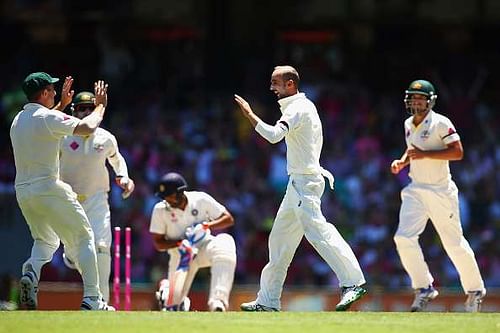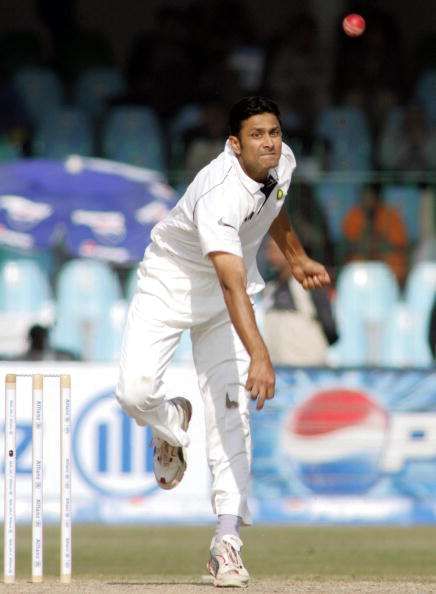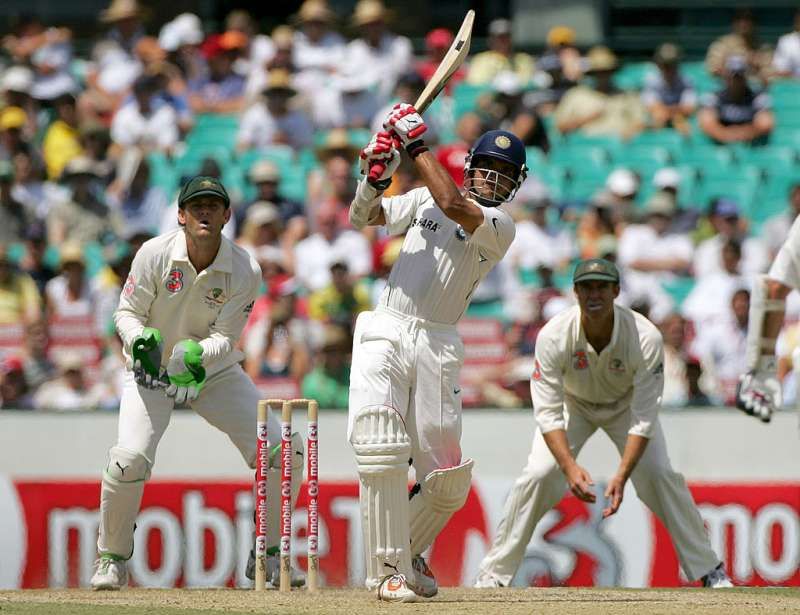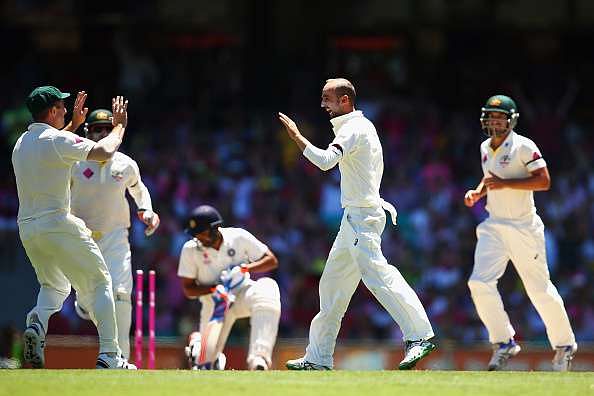
Why spin has become a problem for Indian batsmen
Spin bowling to Indian batsmen has been what pasta is to Italians - an intrinsic part of the diet. Both, a spinning cricket ball and pasta could have numerous versions and countless combinations. But the analogy in question remains relevant nonetheless. Give a battered Indian batsman an over or two of spin to face and that would be therapeutic. Eyes would light up, feet would move decisively, the stride and demeanour would all change.
It has traditionally been so and much to the delight and pride of fans.
The sight of India’s batsmen dominating spinners and decimating their statistical and literal worth on a cricket field has been all too common. Generations of cricket lovers have been treated to such demonstrations season after season. Some of our cricket’s most popular and treasured acts in folklore have been in this genre.
Their cuts, the flicks, the pulls, the wallops against spinners have built a reputation across the cricketing world that India’s batsmen are perhaps the best players of spin and this is not completely untrue.
Spin - an Indian legacy
Spin has been a skill that has been nurtured by India since the early days of its cricket and it has been an art that has made us proud. Legends were woven by spinners that seemed to produce magical twirls off a cricket ball and bamboozling the batsman was what they could do offhandedly.
In fact, to this day test matches in India are about batsmen setting a reasonable target for the final innings and spinners wreaking havoc on pitches that begin to crack and offer sumptuous assistance.
Also Read: Top 10 batsmen against spin bowling in the last four decades
Growing up on such pitches was perhaps what ensured that most good batsmen from India were extremely assured against spin. Whether playing in a domestic game or having net practice, an abundance of spinners and the patronage they received from the conditions, invariably made batsmen handle spin better and learn to play it with great elan.
Playing spin can be onerous unless done with a clear mind and a definitive approach. One has to be nimble on ones feet, watch the ball off the bowler’s hand, judge its length in the shortest possible time, give oneself the best chance to deal with the delivery by adopting the right approach (to attack or to defend) and execute all of these plans.
The technicalities aside, like any other aspect of life, a little bit of confidence in one’s abilities would form the most important element in this amalgam of the senses, the mind and the body.
The struggle against spin
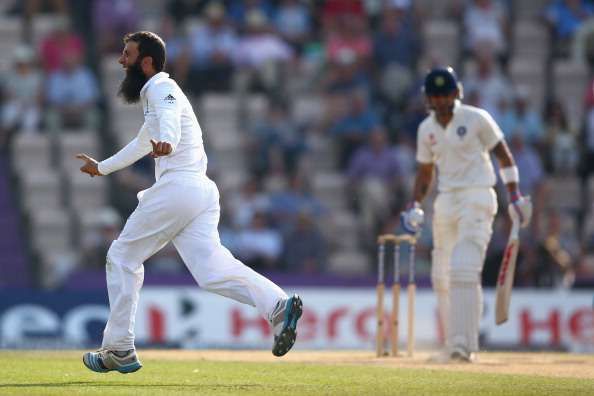
Of late we can notice a trend of India’s batsmen faltering against quality and sustained spin bowling. They seem to be innocent of options at times or choosing the wrong ones at others. The sheen of all the reputation spoken about in the first part of this article has faded considerably in the past few years.
Danish Kaneria, Graeme Swann, Daniel Vettori, Monty Panesar, Nathan Lyon, Rangana Herath etc. have all had India’s famed batsmen in trouble. Some of their most inspirational and memorable spells have been against India and in India, generally.
This is not to take away any credit from these exceptional bowlers, but to give 5 wickets to a part-time spinner in Moeen Ali and that too in England was a big miss by our batsmen.
One might argue that losing wickets to spinners in India is a certain eventuality because they bowl the maximum overs. The point here is not just about the number of wickets claimed by spinners, but that of how we have seemed out of sorts at times and have been feeble in dealing with challenges thrown by spin.
Not very long ago audiences were allowed to feel the awe of Tendulkar belting spinners, Ganguly swinging down the track and launching parabolas into the crowd against them while Laxman did the unthinkable to good spinning balls.
Sehwag and Sidhu bred utter disdain for spin and tore into spinners at every other corner. Gambhir danced to and fro until it was almost too late to play a shot only to carve incredible angles and collect big runs and Dravid defended stoutly, smothering spin ball after ball and scoring runs off glorious shots, all this while men hovered around the bat.
At times it was as if the spin bowler was a medium for the batsman to demonstrate his ability and flaunt his wizardry.
From those highs of invincibility to the now intermittent flashes of brilliance it has been a steep fall for both the players and the fans. It is surprising and disheartening to see the current band of players being as good as they are, falter and fumble with regularity against spin.
Why does the current crop of batsmen struggle against spin?
Where does the problem lie? Have we stopped being a cricketing entity that produces batsmen with exceptional ability against the turning ball? Have we stopped giving them opportunities to face and counter spin in the domestic arena? Have our pitches lost their traditionally acclaimed character?
Has our obsession with becoming better at playing swing and seam eroded our focus on spin? Has the “hit and giggle” league frenzy done away with our players’ ability to handle close-in fielders?
The problem, as it exists, seems to be a combination of all the factors. We do not see enough up and coming spinners pose challenges to good batsmen. If we do not have the bowling to test ourselves then we automatically leave the door open when faced against quality international spinners.
India does not play as many tests as some other countries and this gluttony of limited overs cricket rarely puts our batsmen through the ordeal of surviving countless overs against attacking spinners bolstered by aggressive fields.
It is only natural for them to run to their “release option” when pressurised -which generally is an ungainly hoick or a slog or even worse, a wrong shot altogether. This is a good indicator of incorrect technique.
Also Read: Looking at India's struggles against spin in the recent past
It is no secret that swing and seam are not our favourites when facing the ball. This has been a big weakness of Indian teams and has been exploited well especially when touring. Certainly there has been a lot of emphasis in ensuring that our batsmen get better at handling the faster rendition of bowling, but in doing so have we taken our ability to negotiate spin for granted?
To counter the variations of spin, some innocuous and some exaggerated, is a job that is mastered only by constant practice and rigour.
The pitches at Indian grounds today are gradually losing their reputation as spin friendly tracks. The intense scrutiny that they are subject to often results in curators playing safe and producing docile pitches that just have truckloads of runs or ones that begin to crumble as early as the second day-in an overeagerness to offer assistance to spin.
Preparation of pitches is an intricate job as it is and the immense knowledge and wisdom that the groundsmen possess being tacit, needs to be preserved and put to use effectively. These and a multitude of other factors are plaguing the modern Indian batsman while he struggles to decisively deal with spin.
Conclusion
Indian fans have grown up seeing oppositions make a mockery of batting while handling spinners. They have had great joy in poking fun at this ineptitude of touring batsmen whilst knowing that their own folks have all the wherewithal to dominate and dictate terms to spinners.
To realise the frailty of their new crop batsmen while facing what has traditionally been a convenience is a great shock and a painfully bitter pill to swallow.
With the great Anil Kumble at the helm of affairs in the Indian dressing room and a long season of cricket at home being on offer, one should hope that the Indian batting wagon finds its wheels consistently and more so against spin, for barely anything in cricket is more beautiful than a batsman creating magic with the willow as if it were a wand.
For, the oomph of an Indian batsman at his best and against spinners is one of cricket’s most arousing titillations.
